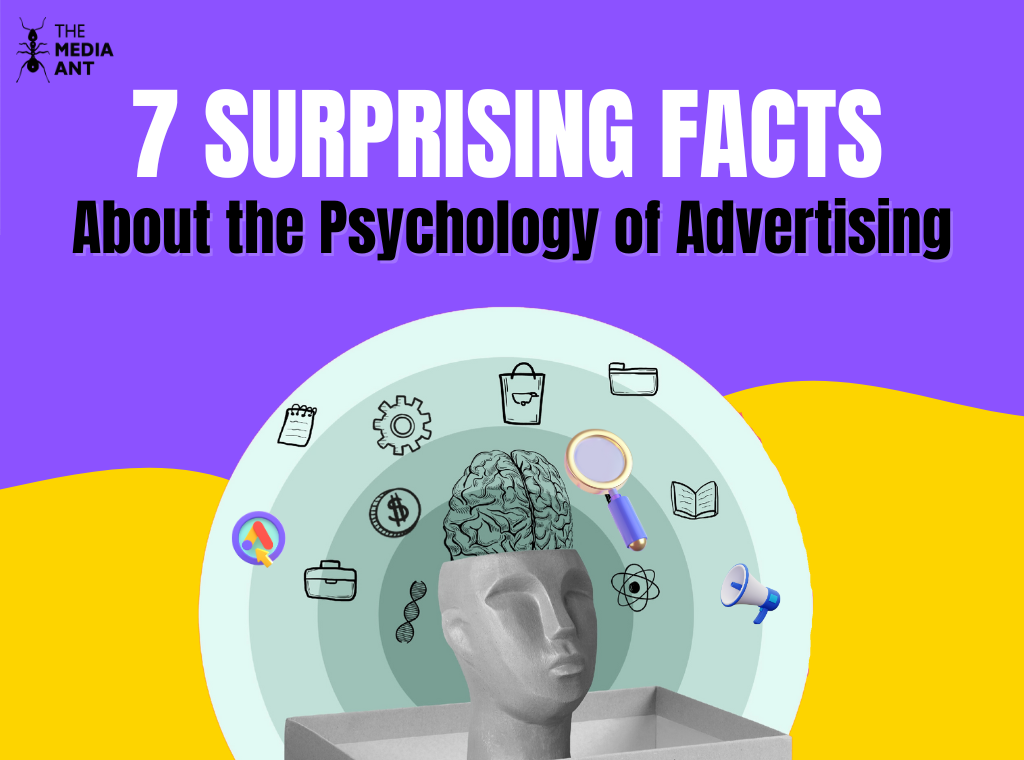The field of Advertising Psychology reveals the complex mechanisms that influence consumer behavior and determine the success of marketing campaigns. In the ever-changing world of advertising, grasping the psychology behind consumer choices is crucial for developing impactful strategies that connect with target audiences. Further exploration into this area unveils seven unexpected truths that shed light on the significance and impact of psychological principles in advertising.
From the primacy and recency effect to the subtle nuances of color psychology and the persuasive power of storytelling, each aspect provides valuable insights on how advertisers can engage and sway consumers. Come along on a journey into the realm of advertising psychology as we uncover these intriguing facts and examine the profound influence they wield in shaping consumer perceptions and guiding purchasing behaviors.
What is the psychology of advertising?
The psychology of advertising examines the complex mechanisms that impact consumer behavior and determine the success of marketing campaigns. It investigates the fundamental psychological principles and cognitive processes that influence how individuals perceive, feel, and make decisions when exposed to ads. Having a grasp of advertising psychology enables marketers to develop messages and tactics that resonate with their target audience on a profound level, triggering specific emotions, wants, and drives.
By utilizing psychological concepts like persuasion, emotion, cognition, and social influence, advertisers can create captivating ads that grab attention, evoke emotional reactions, and prompt desired behaviors. Ultimately, advertising psychology acts as a potent tool for marketers to engage with consumers, foster brand loyalty, and boost sales through a deep understanding of human behavior and psychology.
7 Facts About the Psychology of Advertising
Understanding the psychology behind advertising reveals several intriguing facts that illuminate the intricate mechanisms influencing consumer behavior and decision-making. Here are seven key insights into the psychology of advertising:
1. Primacy and Recency Effect
The primacy effect refers to the tendency for individuals to remember information presented at the beginning of a sequence better than information presented later. Conversely, the recency effect occurs when individuals remember information presented at the end of a sequence better.
Example: In a television commercial, a car manufacturer may strategically place its most compelling features and benefits at the beginning and end of the advertisement to ensure they are remembered by viewers.
2. Anchoring Effect
The anchoring effect occurs when individuals rely heavily on the first piece of information (the “anchor”) they receive when making decisions, even if it is irrelevant or arbitrary.
Example: A retailer may initially list a high price for a product and then offer a discounted price, leading consumers to perceive the discounted price as a better deal than if it were presented without the initial high price (“anchored”).
3. The Power of Storytelling
Storytelling in advertising involves crafting narratives that engage and emotionally connect with consumers, making the brand or product memorable and relatable.
Example: Coca-Cola’s “Holidays Are Coming” advertisements feature heartwarming stories of families and friends coming together during the festive season, associating the brand with joy, togetherness, and celebration.
4. Color Psychology
Color psychology explores how different colors evoke specific emotions and perceptions, influencing consumer behavior and brand perception.
Example: Fast-food chains like McDonald’s use red and yellow in their branding to stimulate appetite and convey a sense of energy and excitement, encouraging customers to make quick purchases.
5. Subliminal Advertising
Subliminal advertising involves presenting messages or images below the threshold of conscious awareness, aiming to influence consumers’ behavior without their explicit knowledge.
Example: In a print advertisement for a perfume, subtle images of romance or luxury may be embedded in the background, subtly influencing consumers’ perceptions of the product.
6. Fear Appeal
Fear appeal leverages consumers’ fears or anxieties to motivate them to take action, such as purchasing a product or changing their behavior to avoid negative consequences.
Example: Anti-smoking campaigns often feature graphic images of the health consequences of smoking to evoke fear and discourage smoking behavior.
7. Sensory Marketing
Sensory marketing involves appealing to consumers’ senses, such as sight, sound, smell, taste, and touch, to create memorable and immersive brand experiences.
Example: Retailers may use ambient scents in their stores to create a pleasant atmosphere and enhance customers’ perception of the brand, leading to longer dwell times and increased sales.
Conclusion
In summary, the field of advertising psychology provides valuable insights into the complex mechanisms that influence consumer behavior and determine the success of marketing strategies. By delving into these seven unexpected findings, we have deepened our comprehension of how advertisers utilize psychological principles to engage audiences, elicit emotions, and prompt desired responses. Whether it’s the primacy and recency effect, the influence of storytelling, color psychology, or sensory marketing, each aspect underscores the significant role of psychological strategies in shaping consumer perceptions and choices.
By acknowledging and utilizing these insights, marketers can develop more compelling and resonant ads that establish a deeper connection with audiences, ultimately boosting brand recognition, loyalty, and sales. As we navigate the ever-changing advertising landscape, understanding the psychology of consumer behavior will continue to be crucial in crafting effective and impactful campaigns.
FAQs on the psychology of advertising
How is psychology used in advertising?
Psychology is used in advertising to understand consumer behavior, emotions, and decision-making processes. By leveraging psychological principles such as persuasion, emotion, and cognitive biases, advertisers can create compelling campaigns that resonate with their target audience and drive desired actions.
What are the advantages of advertising psychology?
The advantages of advertising psychology include the ability to create more effective and impactful campaigns that resonate with consumers on a deeper level. By understanding the psychological drivers behind consumer behavior, advertisers can craft messages and strategies that elicit specific emotions, desires, and motivations, ultimately leading to increased brand awareness, engagement, and sales.
What is an example of advertising in psychology?
An example of advertising in psychology is the use of fear appeal in anti-smoking campaigns. By depicting graphic images of the health consequences of smoking, advertisers aim to evoke fear and discourage smoking behavior, leveraging psychological principles to influence consumer attitudes and behaviors.
How was psychology first used in advertising?
Psychology was first used in advertising in the early 20th century when advertisers began to apply psychological theories and research findings to understand and influence consumer behavior. One of the earliest examples is the work of Edward Bernays, who used insights from psychology to pioneer techniques such as celebrity endorsements and subliminal messaging in advertising campaigns.





